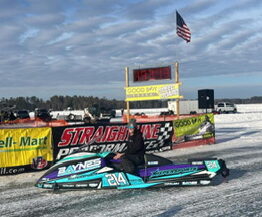Check your helmets and they should meet or exceed the "2005 Snell Foundation approval Code or the European Standard ECE 22.05". DOT approved helmets are not legal unless they have the above rating added in conjunction. See page 16 of the 2009-2010 ISR Rule Book.
Let me know if you have any questions.
Thanks!
Ron
FYI - Here is some information on the standards being worked on:
The Snell M2010 Standard - Background
Beginning October 1, 2009, the motorcycle riding public will be able to buy and wear motorcycle helmets certified to the new Snell M2010 standard.
There are major differences between M2010 and previous Snell Standards; mostly due to the emergence of ECE 22-05, the standard now in mandatory use throughout the UK and Europe.
Snell motorcycle helmet standards are voluntary; manufacturers build to Snell standards because they want to and they build to DOT, ECE 22-05 or other standards because they have to.
And if it comes to a choice between what a manufacturer wants to do and what it has to do, they will give up Snell for DOT or ECE 22-05 every time.
It’s not like there’s a real choice. In North America, since the mid 1970’s, the mandatory motorcycle helmet safety standard has been the Federal Motor Vehicle Safety Standard (FMVSS) 218, colloquially known as the DOT standard (info).
In the United States, a motorcycle helmet might meet the Snell standard, but it had better meet FMVSS 218. If it doesn't, the manufacturer, the distributor, the dealer and, depending on the state, the rider would be in for a lot of grief.
For this reason, Snell said that their motorcycle helmet standards have been compatible, at the very least, with the DOT standard.
Snell 2010 Sticker in the Shoei RF-1100 Helmet (review).
Snell and ECE 22-05
According to Snell, a capable company has always been able to build a helmet which would satisfy both Snell and DOT standards, but not Snell and ECE 22-05. Larger sized helmets with head sizes of 60 cm and up might be able to meet both Snell and ECE 22-05, but this becomes more difficult for smaller sizes, where it is impossible to meet both sets of requirements. As a result, Snell certified motorcycle helmets are currently allowed for European racing but not for European street riding. Thus, manufacturers who make Snell certified helmets cannot bring their Snell models into Europe. If they want to sell helmets in Europe, they have to build separate, non-Snell helmet versions.
For the same reason, Europeans street riders do not have access to Snell levels of protective performance. Like it or not, they must wear helmets meeting the ECE 22-05 standard, even though the ECE 22-05 standard may, in some regards, offer less protection than even the DOT standard.
Snell M2010 "World Helmet"?
The new Snell M2010 standard resolves this problem. Once it takes effect, manufacturers will be able to build helmets which will satisfy DOT, ECE 22-05 and Snell simultaneously.
The chief virtue of the Snell M2010 standard is that it will enable a “world helmet” which will provide Snell levels of protection to riders in Europe as well as in North America.
For street riders in North America, the differences between M2010 and M2005 should be of little significance. M2010 does not exceed M2005 but it does demand comparable protection. But for street riders in Europe, M2010 may make a considerable difference.
For the first time in years, they may be able to choose helmets which satisfy all the local regulations and provide a premium of protective capability over and above local requirements. Helmets certified to the M2010 standard and ECE 22-05 will provide protection comparable to M2005 and will qualify for sale and use in the UK and Europe.
The new and improved M2010 motorcycle helmet standard is an effort to prevent unnecessary brain and head injury through better headgear, which has been Snell’s mission for over 50 years.






